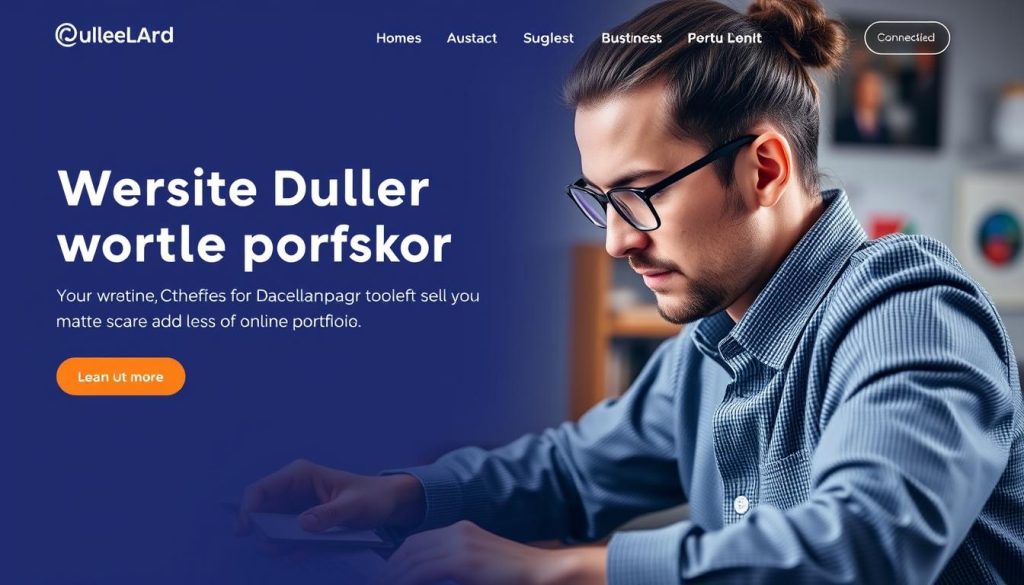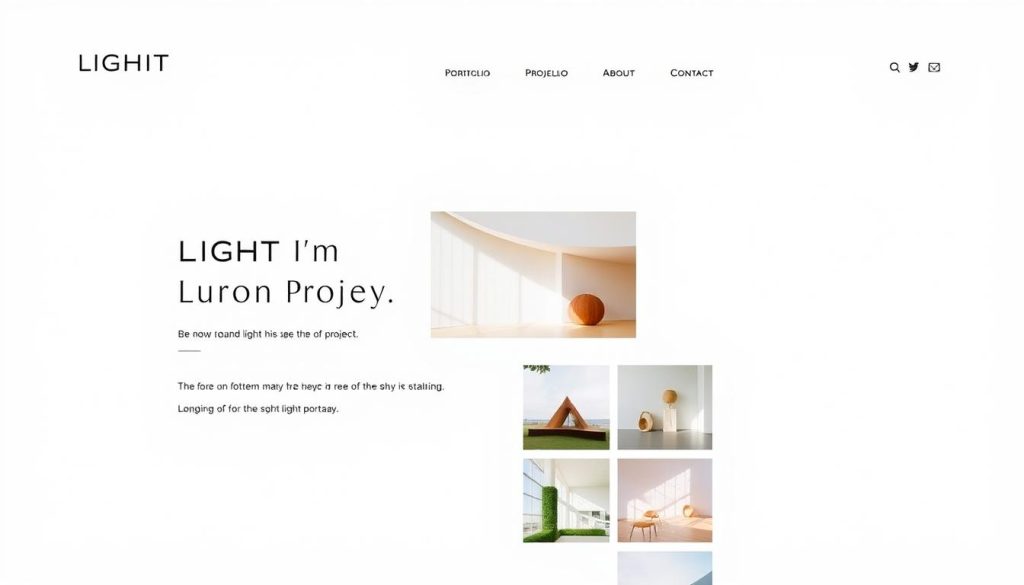In today’s competitive job market, having a strong portfolio is crucial for demonstrating your professional capabilities and achieving career stability. A well-crafted portfolio serves as a powerful tool to showcase your work and skills.
As an independent professional, creating an effective online portfolio can be a game-changer. It not only displays your work but also tells your professional story in a compelling way, helping you attract potential employers or clients.
To get started, we’ll explore comprehensive strategies for portfolio building that will help you understand the importance of portfolio development as a career stability strategy.
Table of Contents
Key Takeaways
- Create a strong online presence with a professional website.
- Showcase your work and skills effectively.
- Develop a portfolio that tells your professional story.
- Leverage your portfolio to attract potential employers or clients.
- Maintain and promote your portfolio across multiple channels.
The Power of Professional Portfolios in Today’s Job Market
Professional portfolios have evolved to become crucial assets in the contemporary job landscape, offering tangible proof of one’s skills and accomplishments. A digital portfolio gives you credibility as a professional, allowing you to showcase your best work and demonstrate your skills to future clients and employers.
Why Portfolios Matter for Career Stability
A well-crafted portfolio is essential for career stability as it provides concrete evidence of your professional journey and growth over time. Here are some key reasons why portfolios matter:
- A portfolio serves as visual proof of your capabilities, offering potential employers or clients confidence in your abilities.
- It creates career stability by documenting your professional evolution, demonstrating adaptability and continuous learning.
- Unlike resumes, portfolios provide tangible examples of your work quality, problem-solving approach, and creative thinking.
How Portfolios Showcase Your Professional Evolution
Your portfolio is more than just a collection of your work; it’s a narrative of your professional evolution. By showcasing how your skills and expertise have evolved, you demonstrate to potential clients and employers your ability to grow and adapt. This not only makes you a more attractive candidate but also positions you to capitalize on unexpected opportunities.
To make your portfolio truly effective, it’s crucial to curate your content strategically, ensuring that it represents your professional brand and showcases your best work. By doing so, you establish a strong foundation for client acquisition and retention, setting yourself apart in a competitive job market.
Understanding Different Portfolio Types for Various Professionals
The type of portfolio a professional needs depends on their industry, skills, and the audience they are targeting. Different professions require tailored portfolio approaches that highlight industry-specific skills and accomplishments most relevant to potential clients or employers.
Digital vs. Physical Portfolios
Digital portfolios offer advantages including global accessibility, easy updates, multimedia integration, and analytics tracking, making them increasingly preferred across most industries. In contrast, physical portfolios still maintain relevance in certain fields like traditional art, architecture, and fashion design, where tactile elements and physical presentation matter.
Industry-Specific Portfolio Approaches
Various professionals benefit from different portfolio strategies. For instance, creative professionals like photography and design experts benefit from visually-focused portfolios that prioritize high-quality images and minimal text. Technical professionals should emphasize problem-solving processes and technical specifications. Service-based professionals need portfolios that highlight client testimonials and case studies.
| Profession | Portfolio Focus | Key Elements |
|---|---|---|
| Creative Professionals | Visually-focused | High-quality images, minimal text |
| Technical Professionals | Problem-solving and technical | Technical specifications, measurable outcomes |
| Service-based Professionals | Client-centric | Client testimonials, case studies |
You can build any kind of portfolio, whether for small business, photography/videography, design, contracting, consulting, architecture, art or more. Just chat with AI to create it in minutes or pick a template and customize it to your liking on your website or online portfolio platform.
Essential Elements of an Effective Portfolio
An effective portfolio is more than just a collection of work; it’s a strategic tool for career advancement. It should strike a balance between showcasing your skills and maintaining a narrative about your professional journey.
Showcasing Your Best Work
Curating your work to showcase diversity in skills and project types is crucial. Your portfolio should feature only your strongest projects that accurately represent your capabilities.
Telling Your Professional Story
The « About Me » section serves as the human element of your portfolio, connecting your work to your personal journey and professional philosophy. It provides context to your content and helps potential clients understand your approach.
Including Client Testimonials and Results
Client testimonials and measurable results are vital. They transform your portfolio into a persuasive business development tool that builds trust with potential clients. Using high-quality images and clear narratives enhances the impact.
| Portfolio Element | Description | Benefit |
|---|---|---|
| Showcasing Best Work | Curated selection of projects | Demonstrates skills and expertise |
| Telling Professional Story | « About Me » section and project narratives | Provides context and personal connection |
| Client Testimonials | Feedback from clients | Builds credibility and trust |
For more information on enhancing your professional presence, visit this resource on personal branding for freelancers.
Portfolio Building Platforms and Tools
Portfolio building platforms have revolutionized the way professionals showcase their work. Building a strong online presence is crucial for career stability.

Website Builders for Portfolio Creation
General website builders provide flexibility and customization options. They may require more time to configure for portfolio-specific needs.
Specialized Portfolio Services
Dedicated portfolio platforms offer specialized features for showcasing creative work, with industry-specific templates and functionality.
Free vs. Premium Portfolio Solutions
Free solutions offer basic functionality, while premium options provide advanced features like custom domains and enhanced analytics.
Step-by-Step Portfolio Building Process
Establishing a strong professional presence begins with building a robust portfolio. This process involves several key steps that help you create a compelling showcase of your skills and experience.
Gathering and Organizing Your Work
Begin by auditing your available work samples and selecting pieces that best represent your skills and professional growth. Organize these samples into logical categories or projects to demonstrate your capabilities effectively.
Selecting the Right Platform
Research and choose a website platform that aligns with your technical comfort level and industry needs. Consider factors such as customization options, ease of use, and integrations with other tools.
Designing Your Portfolio Layout
When designing your portfolio layout, prioritize user experience and intentionality. Use clear navigation and logical sequencing to guide viewers through your work.
Writing Compelling Descriptions
To get started, write clear and concise project descriptions that provide context, highlight your contributions, and detail measurable outcomes. This will help potential clients or employers understand your value and expertise.
| Portfolio Element | Purpose | Best Practice |
|---|---|---|
| Project Samples | Showcase skills and experience | Curate your best content |
| Project Descriptions | Provide context and highlight achievements | Use clear, concise language and focus on outcomes |
| Visual Design and Layout | Create an engaging user experience | Use intentional layouts and clear navigation |
Effective Portfolio Building Strategies for Maximum Impact
Creating a portfolio that truly showcases your work requires careful planning and strategic curation. To achieve maximum impact, it’s crucial to balance various elements that demonstrate your professional capabilities and versatility.
Curating Content Strategically
Strategic content curation involves selecting work samples that tell a cohesive story about your professional capabilities. This approach helps in demonstrating range and versatility. Using a snap grid, flex block allows you to drag & drop, scale, overlay and overlap your elements, building a custom layout as unique as your work.
Creating Visual Consistency
Visual consistency is achieved through cohesive color schemes, typography, and layout patterns that reinforce your professional brand identity. This consistency is key to making your portfolio visually appealing and professional.
Balancing Quantity and Quality
Prioritizing quality over quantity is essential. Featuring fewer exceptional projects rather than diluting your portfolio with mediocre work ensures that your portfolio has the maximum impact. Regularly auditing your portfolio to remove outdated work and ensuring all featured projects align with your current career goals is also crucial.
Leveraging Your Portfolio to Attract Clients and Employers

Your portfolio is a critical asset in attracting clients and employers, but its effectiveness depends on how well you leverage it. A well-optimized website or site can significantly enhance your visibility and credibility.
Portfolio SEO Optimization Techniques
To ensure your portfolio is discoverable, you need to optimize it for search engines. This involves incorporating relevant keywords in page titles, descriptions, image alt text, and project summaries. Using tools like Wix, which comes with built-in SEO tools and guidance, can help you customize your SEO settings and generate meta tags and descriptions using AI.
Integrating Contact Forms and Call-to-Actions
To get in touch with potential clients or employers, it’s essential to have intuitive contact forms and strategic call-to-actions (CTAs) on your website. These elements guide visitors toward contacting you or downloading your resume. Ensure your contact page is easily accessible and includes clear information about your availability and service areas.
Portfolio Maintenance and Regular Updates
Regular portfolio updates are essential to showcase your professional growth and adaptability. Maintaining a portfolio is not a one-time task; it requires continuous effort to ensure it remains relevant and effective.
When and How to Refresh Your Portfolio
Refreshing your portfolio should be done strategically. Establish a regular schedule for portfolio reviews and updates, ideally quarterly.
Archiving Past Projects Effectively
Archiving past projects is crucial for maintaining a clean and relevant portfolio. Develop criteria for determining when to remove older projects.
| Activity | Frequency | Purpose |
|---|---|---|
| Review and Update Portfolio | Quarterly | Ensure relevance and currency |
| Update Bio and Skills List | As needed | Reflect current expertise |
| Archive Past Projects | Periodically | Maintain a clean and relevant portfolio |
Promoting Your Portfolio Across Multiple Channels

To maximize your portfolio’s impact, it’s crucial to promote it across various online channels. This multi-channel approach ensures that your work reaches potential clients and employers where they are most active.
Social Media Integration Strategies
Integrating your online portfolio with social media profiles is a powerful way to drive traffic to your complete work showcase. By sharing selected projects, behind-the-scenes content, and portfolio updates, you can attract the right audience. Create platform-specific content that highlights different aspects of your portfolio, tailored to each social network’s audience preferences.
Networking with Your Portfolio
Utilize email marketing to share portfolio updates with past clients, colleagues, and industry contacts. Participate in relevant online communities and forums, subtly referencing your portfolio to demonstrate authority. Leverage professional networking platforms by incorporating portfolio links in your profile and sharing relevant projects. This helps maintain visibility within your professional network and attracts potential clients.
Conclusion: Building a Future-Proof Career Through Strategic Portfolio Development
Building a future-proof career requires a robust portfolio that showcases your professional evolution. A strategically developed portfolio serves as more than a work showcase—it becomes a career stability tool that demonstrates your readiness for future opportunities.
The most effective portfolios balance comprehensive documentation of your capabilities with strategic curation that highlights your unique professional narrative and value proposition. Regular portfolio maintenance ensures your professional presentation remains relevant and compelling. By implementing the strategies outlined in this guide, you’re not just creating a website or online portfolio—you’re building a foundation for long-term career stability and professional growth, getting started on a way to success using the right tools in one place.
FAQ
What is the best way to get started with creating an online presence for my work?
To establish a strong online presence, start by selecting a suitable platform for your digital portfolio, such as a website builder or specialized portfolio services. Choose a template or layout that aligns with your profession and customize it to showcase your work effectively.
How do I choose the right platform for my portfolio?
When selecting a platform, consider factors such as ease of use, customization options, and integrations with social media or contact forms. You should also think about the type of content you want to showcase and whether the platform supports it, such as images, videos, or articles.
What are the essential elements that my portfolio should include?
An effective portfolio should showcase your best work, tell your professional story, and include client testimonials or results. It’s also crucial to curate your content strategically, maintain visual consistency, and balance quantity and quality to make a strong impression on potential clients or employers.
How often should I update my portfolio?
Regular updates are essential to keep your portfolio fresh and relevant. Refresh your portfolio when you’ve completed new projects, achieved significant milestones, or when your career goals change. Archiving past projects effectively will also help you maintain a clean and organized portfolio.
Can I use a custom domain for my portfolio, and how does it benefit me?
Yes, using a custom domain can enhance your professional image and make your portfolio more memorable. It can also improve your visibility in search engine results, as search engines tend to favor custom domains over generic ones.
How can I promote my portfolio across multiple channels?
To promote your portfolio, integrate it with your social media profiles, and share your work with your network. You can also leverage networking events, conferences, or online communities to showcase your portfolio and connect with potential clients or employers.





